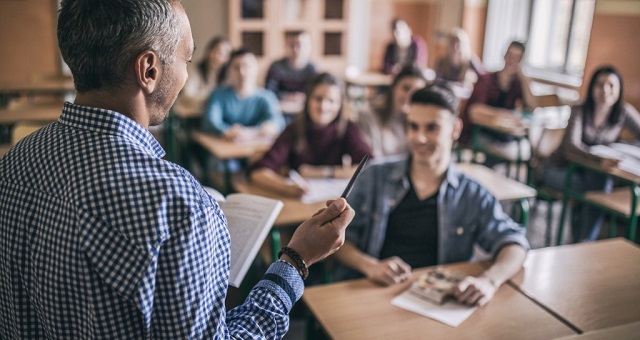A decade has passed since the National Survey of Student Engagement (NSSE) published George D. Kuh’s seminal report “High-Impact Educational Practices: What They Are, Who Has Access to Them, and Why They Matter.” Kuh (2008) argued that student learning is negatively impacted by the unsystematic utilization of active learning practices and he presented 10 high-impact active learning educational practices that, “according to a growing array of research studies, are correlated with positive educational results for students from widely varying backgrounds” (p. 1). The High-Impact Practices (HIPs) identified by Kuh (2008) include:
- First-year experiences
- Common intellectual experiences
- Learning communities
- Writing-intensive courses
- Collaborative assignments and projects
- Undergraduate research
- Diversity/global learning
- Service learning, community-based learning
- Internships
- Capstone courses and projects
- ePortfolios (added 2016)
Kuh (2008) recommended that “each institution take action to ensure that all students participate in at least two of these practices” (p. 7). One challenge with this idea is that one faculty member most often cannot institute these types of larger changes. For instance, if you feel your institution would benefit from first-year experience seminars, the development of such courses would likely require support from faculty and administrators plus approvals through the school’s governance process. Fortunately, for faculty who want to avoid those larger scale institutional level projects, there are elements of high-impact practices that can be incorporated at the course level.
Instead of focusing on the list of 10 practices, faculty who want to inform the development of their courses with these concepts should instead focus on the behaviors underlying each. Kuh (2008) suggests that when executed well, HIPs should include six specific behaviors. He suggest students should:
- Invest time and effort
- Interact with faculty and peers about substantive matters
- Experience diversity
- Respond to more frequent feedback
- Reflect and integrate learning
- Discover the relevance of learning through real-world applications
In order to leverage high-impact practices and the associated student behaviors, faculty should first reflect on their strengths and align their teaching schedule to them. If your talents are for teaching capstone courses, coordinate with your dean to teach senior-level courses. If you have strong skills in building online courses, developing elements similar to an ePortfolio may create summative projects in your course that are engaging for the students and fun for you to grade. If you have an existing course that you’ve been teaching for a while, consider what changes you might be able to incorporate.
For one of our authors, incorporating these behaviors meant revising an existing assignment. In a media writing course, students learned how to write public service announcements (PSA). To leverage these high-impact practices, an existing assignment was modified. Instead of having students write PSAs for fictional clients, an actual client was found. Partnering with a local non-profit organization to create a service learning project, students worked with their peers, their instructor and a representative from the non-profit to learn about the organization’s communication needs and brainstorm possible solutions. Feedback was provided to students throughout the entire writing process which culminated in the creation of an actual PSA video (partnering with another faculty member from a video production course) and the final product was distributed through the organization’s website and social media sites providing students with a real-world experience. Before concluding the project, students were asked to reflect on the project and how they integrated the course materials into the activity. This activity required a substantial investment of time and allowed students to engage with each other, their professor and employees from all levels within the partner organization. The activity incorporated all six behaviors and it was well received by students.
It’s important to remember that the design and incorporation of HIPs into courses should be intentional. Students need to have a clear explanation of the value of the activity, why it’s important (either as a skill- or disposition-builder), and how it will help them achieve a certain outcome. This transparency helps gain student buy-in and creates a faculty/student partnership centered on student success.
Getting started with this process is easy. First, determine whether or not you are engaging in HIPs already. Take an audit of your course and compare your activities and assignments to the six student behaviors mentioned earlier. You may be surprised to discover that you may already be incorporating high-impact practices, but you might have not identified them as such. Based on your findings, consider how you can either adjust an existing activity or if there is a need to create a new one. If you need to create a new activity, use the six student behaviors as a guide and how they can help students achieve the course learning outcomes. Some potential activities with these attributes might include partnering with another faculty member to create a learning community, incorporating collaborative assignments and projects, engaging students in research projects, or adding a service learning activity to your syllabus to name a few. There’s no limit to the potential ways these behaviors can be incorporated in any discipline.
Reference
Kuh, George D. (2008). “High-impact educational practices: What they are, who has access to them, and why they matter.” AAC&U, Washington, D.C.
Priscilla Hobbs is the Associate Dean of General Education and Interdisciplinary Studies at Southern New Hampshire University. She hold a PhD in Mythological Studies with emphasis in Depth Psychology from Pacifica Graduate Institute and is the author of Walt’s Utopia: Disneyland and American Mythmaking.
Evan Kropp is the Associate Dean of Faculty, Communication and Philosophy at Southern New Hampshire University. He holds a PhD in Communication from the University of Georgia where he also earned a Graduate Certificate in Interdisciplinary University Teaching.






